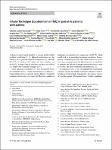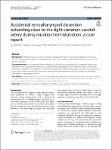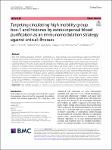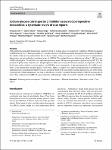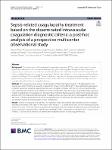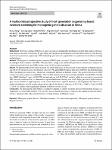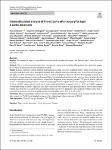Search
Author
- Daqing, Ma (3)
- Alexis, Ferré (2)
- Anna, Lybeck (2)
- Ashish K., Khanna (2)
- next >
Subject
- intensive care unit (8)
- acute respiratory dist... (5)
- chronic obstructive pu... (5)
- ICU (5)
- next >
Has File(s)
Search Results
The InTeQ has proven to be feasible, valid, and reliable in adults with persistent asthma [16], which can be useful for patients’ self-monitoring and healthcare professionals teaching patients. This study aimed to assess the InTeQ’s validity and reliability in children and adolescents with asthma. This study was performed within the ARCA (Asthma Research in Children and Adolescents) cohort, a prospective, multicenter, observational study (NCT04480242) [17], replicating the original InTeQ validation performed on adults with asthma [16] |
Retropharyngeal dissection is a possible complication during nasotracheal intubation. We report a case of a retropharyngeal dissection extending close to the right common carotid artery occurring while inserting a nasotracheal tube. |
Both high mobility group box-1 (HMGB1) and histones are major damage-associated molecular patterns (DAPMs) that mediate lethal systemic inflammation, activation of the complement and coagulation system, endothelial injury and multiple organ dysfunction syndrome in critical illnesses. Although accumulating evidence collectively shows that targeting HMGB1 or histones by their specific antibodies or inhibitors could significantly mitigate aberrant immune responses in multiple critically ill animal models, routine clinical use of such agents is still not recommended by any guideline. |
Although the recommended preoperative cessation period for sodium-glucose cotransporter 2 inhibitors (SGLT2is) changed in 2020 (from 24 h to 3–4 days preoperatively) to reduce the risk of SGLT2i-associated perioperative ketoacidosis (SAPKA), the validity of the new recommendation has not been verified. Using case reports, we assessed the new recommendation effectiveness and extrapolated precipitating factors for SAPKA. We searched electronic databases up to June 1, 2022 to assess SAPKA (blood pH < 7.3 and blood or urine ketone positivity within 30 days postoperatively in patients taking SGLT2i). |
The development of disseminated intravascular coagulation (DIC) in patients with sepsis has been repeatedly confirmed as a factor associated with poor prognosis. Anticoagulant therapy has been expected to improve sepsis patient outcomes, whereas no randomized controlled trials have demonstrated the survival benefit of anticoagulant therapies in non-specific overall sepsis. Patient selection based on the component of “high disease severity” in addition to “sepsis with DIC” has recently proved important in identifying appropriate targets for anticoagulant therapy. The aims of this study were to characterize “severe” sepsis DIC patients and to identify the patient population benefiting from anticoagulant therapy. |
Newborn screening (NBS) is an important and successful public health program that helps improve the long-term clinical outcomes of newborns by providing early diagnosis and treatment of certain inborn diseases. The development of next-generation sequencing (NGS) technology provides new opportunities to expand current newborn screening methodologies. |
Echocardiographic quantification of ejection fraction (EF) by manual endocardial tracing requires training, is time-consuming and potentially user-dependent, whereas determination of cardiac output by pulmonary artery catheterization (PAC) is invasive and carries a risk of complications. Recently, a novel software for semi-automated EF and CO assessment (AutoEF) using transthoracic echocardiography (TTE) has been introduced. |
Previous studies have reported high prognostic accuracy of circulating neurofilament light (NfL) at 24–72 h after out-of-hospital cardiac arrest (OHCA), but performance at earlier time points and after in-hospital cardiac arrest (IHCA) is less investigated. We aimed to assess plasma NfL during the first 48 h after OHCA and IHCA to predict long-term outcomes. |
To evaluate the impact of individual institutions on the outcome after surgery for Stanford type A aortic dissection (TAAD). |
Anterior shoulder dislocations are commonly seen in the emergency department for which several closed reduction techniques exist. The aim of this systematic review is to identify the most successful principle of closed reduction techniques for an acute anterior shoulder dislocation in the emergency department without the use of sedation or intra-articular lidocaine injection. |

